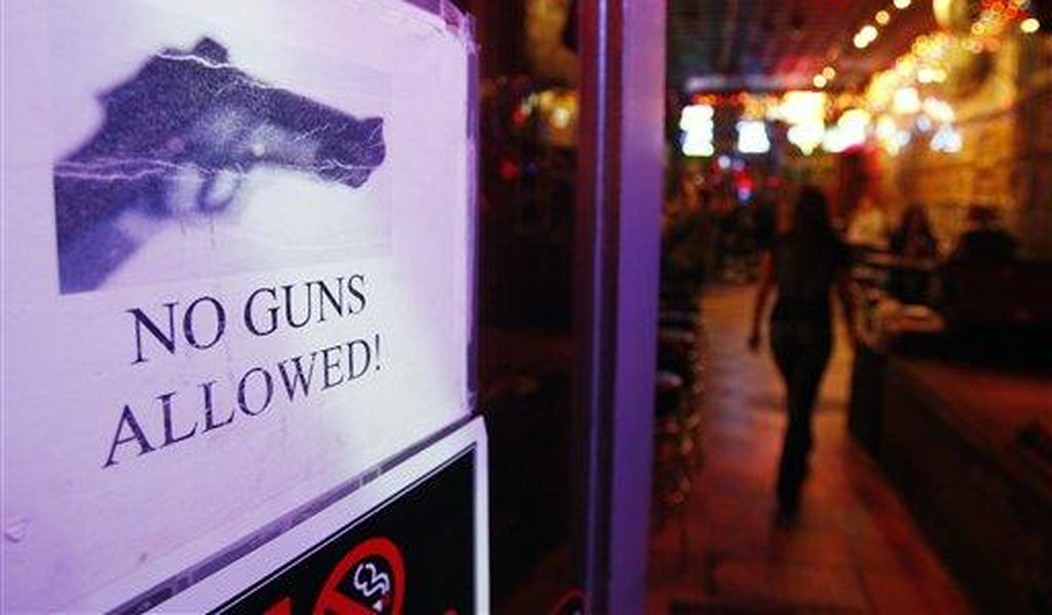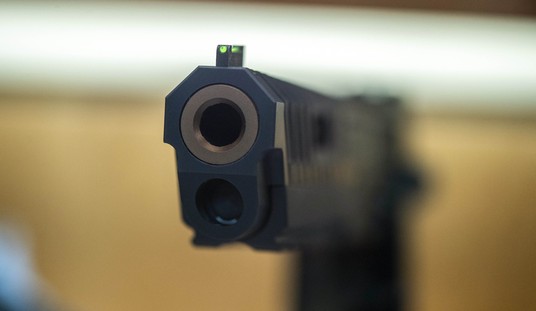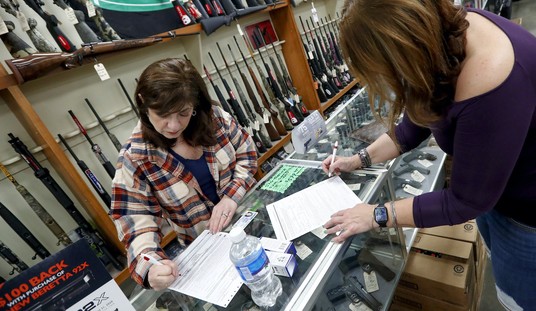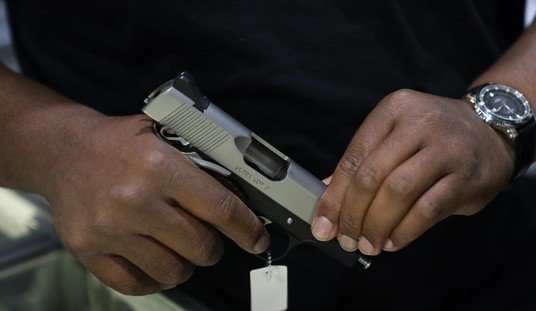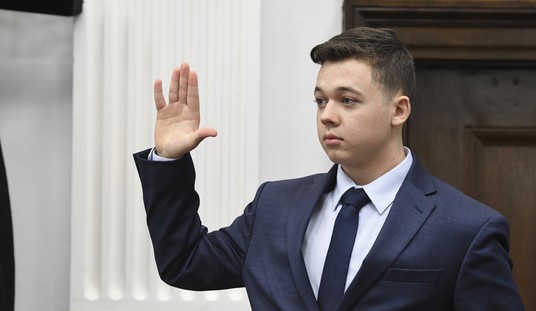We know that Maine’s “yellow flag” law didn’t prevent the murder of 18 people and the wounding of 13 others in Lewiston on Wednesday night, but it’s also true that no armed citizen stopped the attack either. There was no Elisjsha Dicken or Stephen Williford on hand when the suspect walked into a bowling alley and opened fire, nor when he showed up fifteen minutes later at a local restaurant to continue his killing spree.
Gun control activist and academic Megan Walsh, who heads up the University of Minnesota’s Gun Violence Prevention Law Clinic raised that point in rebuttal to a tweet from Bearing Arms contributor Ranjit Singh on Thursday morning.
Your way isn’t working. No good guy with a gun or permitless carry stopped this shooting. Now many are dead, injured, and still sheltering in place. You can support ERPO laws. You can support waiting periods. You can support background checks. None of these harm your 2A right. https://t.co/PLJfQPJMh3
— Megan Walsh (@MeganWalshGVP) October 26, 2023
I disagree with Walsh about her examples not harming your 2A right, but I’m not going to spend a lot of time refuting her contention. I’ll merely note that there are likely a lot of Mainers who are visiting gun stores today because they’re concerned about a madman on the loose in their community, and forcing them to wait 72 hours to be able to protect themselves sure sounds like an infringement to me. The same holds true for criminalizing the private transfer of firearms, and when it comes to red flag laws you don’t have to look too hard to find egregious abuses of Extreme Risk Protection Orders.
Besides, as attorney Kostas Moros pointed out to Walsh, California has every one of those measures in place, and yet still has active shooting incidents (in fact, California led the nation in such incidents in 2021).
Megan, a few points.
1. This man was committed for two weeks and had threatened to commit a mass shooting. I believe this likely made him a prohibited person, though I haven't confirmed. Regardless, that should have been enough to invoke Maine's "yellow flag" law.
2. I…
— Kostas Moros (@MorosKostas) October 26, 2023
The real mic-drop moment, however was delivered by the Minnesota Gun Owners Caucus, who brought the receipts showing the extent of Walsh’s anti-2A extremism.
What gun control law do you believe would "harm your 2A right? and therefore should be overturned?
You argued in an amicus brief in the McDonald case in 2010 that cities can ban private ownership of firearms and that "the Constitution of the United States does not require… pic.twitter.com/0kEToTyC0L
— MN Gun Owners Caucus (@mnguncaucus) October 26, 2023
Pure. Gold.
A more common response to Walsh’s post was that we shouldn’t be surprised that there wasn’t an armed response to the shootings because they took place in a “gun-free zone”.
Laws prohibit carrying where liquor is served, there. But you already knew this.
— Aegisjhalmur (@aegisjhalmur) October 26, 2023
How was a “Good Guy” supposed to intervene when both shootings happened at places that are deemed “Gun Free Zones” in Maine because they serve alcohol?
— Jim Satala (@JimSatala) October 26, 2023
Perhaps the fact that it was a designated gun-free zone has something to do with it?
— Boss Chonk (@bosschonk) October 26, 2023
This individual committed these crimes in gun free zones. Gun free zones disarm law-abiding citizens and prevent them from protecting themselves and others. Had a good guy been allowed to be armed in these locations the end result might have most likely been very different.
— RebelYankee (@RebelYankee2) October 26, 2023
“No good guy with a gun or permitless carry stopped this shooting.”
Permitless carry only works if people exercise it. Second, see below. It looks like this was a gun-free zone. Amy’s follow-up tweet says Maine enforces private property bans. 1/x https://t.co/l1MvrKIXPI
— Ranjit Singh (@AuthorSingh) October 26, 2023
So were these places “gun-free zones”? The honest answer is “maybe, but we don’t yet know for sure.” Here’s what Maine State Police has to say about “sensitive places”; not just in Lewiston but statewide.
The law does not otherwise change where a person may carry or who may possess a firearm. It will still be illegal to possess a firearm in the following places, with some very limited exceptions:
- Courthouses (17-A M.R.S. § 1058)
- State Parks (12 M.R.S. § 1803(6), (7) and Bureau of Parks and Lands Rules Chapter 1)
- Acadia National Park (12 M.R.S. § 756)
- Schools (20-A M.R.S. § 6552)
- Federal buildings (18 U.S.C. § 930)
- State Capitol area (25 M.R.S. § 2904 & DPS Rule Chapter 41)
- Private property when prohibited by the property owner
- Establishments licensed for on-premises consumption of liquor, if the premises are posted. Note that even if there is no posted prohibition, it is illegal to carry on these premises while under the influence of intoxicating liquor or drugs. (17-A M.R.S. §1057)
- Wildlife Sanctuaries (as listed in 12 M.R.S. § 12707)
- Labor disputes and strikes (32 M.R.S. § 9412(5))
- Baxter State Park (as prohibited by Rules)
Allagash Wilderness Waterway (as prohibited by rules)There will be some circumstances in which an optional handgun permit will authorize the permittee to carry in certain locations or during an activity when an unpermitted person could not:
- Acadia National Park (Maine Permit required; 12 M.R.S. §756) NOTE: Pursuant to 25 M.R.S. 2001-A (2)(F), Maine will recognize a concealed handgun permit issued by another state to its resident if that state recognizes Maine’s resident concealed handgun permits. A resident permit from that state is valid for concealed carry of a handgun within Acadia National Park
- State Parks (Permit required; open carry not permitted; 12 M.R.S. § 1803(7))
- Regular archery hunting-deer only (Permit required; 12 MRS § 11403)
- Employees’ vehicles on work premises (Permit required; vehicle must be locked and firearm must not be visible; 26 M.R.S. §600)
So the bowling alley and restaurant where the shootings took place could have been “gun-free zones”, but only if they specifically posted signage to that effect, and so far we’ve seen no evidence indicating that’s the case.
As Amy Swearer noted (and as the state police make clear), however, even if those locations weren’t posted it’s still a criminal offense to carry in those places if you’re drinking. I’d say it’s likely that a fair amount of adult customers at both the bowling alley and restaurant were partaking of an adult beverage or had plans to do so when the suspect walked in and opened fire, so that would cut down on the number of potential armed citizens who could have responded.
Ranjit’s point about concealed carry (permitless or not) only working to prevent shootings if people are exercising that right is important as well. I don’t know of any Second Amendment advocate who claims that adopting permitless carry will stop every mass shooting or active shooter attack. That’s as ridiculous as, well, claiming that universal background checks or a “red flag” law will do so. But as Dr. John Lott has reported, between 2014 and 2022, armed citizens ended at least 35% of active shooting incidents; a number that jumps to over 60% when “gun-free zones” are excluded.
The FBI reports that armed citizens only stopped 14 of the 302 active shooter incidents it identified for the period 2014-2022. The FBI defines active shooter incidents as those in which an individual actively kills or attempts to kill people in a populated, public area. But it does not include those it deems related to other criminal activity, such as a robbery or fighting over drug turf.
An analysis by the CPRC identified a total of 440 active shooter incidents during that period and found that an armed citizen stopped 157. A previous report looked at only instances when armed civilians stopped what likely would have been mass public shootings. There were another 27 cases that we didn’t include where armed civilians stopped armed attacks, but the suspect didn’t fire his gun. Those cases are excluded from our calculations, though it could be argued that a civilian also stopped what likely could have been an active shooting event.
The FBI reported that armed citizens thwarted 4.6% of active shooter incidents, while the CPRC found 35.7%.
Two factors explain this discrepancy – one, misclassified shootings; and two, overlooked incidents. Regarding the former, the CPRC determined that the FBI reports had misclassified five shootings: In two incidents, the Bureau notes in its detailed write-up that citizens possessing valid firearms permits confronted the shooters and caused them to flee the scene. However, the FBI did not list these cases as being stopped by armed citizens because police later apprehended the attackers. In two other incidents, the FBI misidentified armed civilians as armed security personnel. Finally, the FBI failed to mention citizen engagement in one incident.
For example, the Bureau’s report about the Dec. 29, 2019 attack on the West Freeway Church of Christ in White Settlement, Texas, that left two men dead does not list this as an incident of “civic engagement.” Instead, the FBI lists this attack as being stopped by a security guard. A parishioner, who had volunteered to provide security during worship, fatally shot the perpetrator. That man, Jack Wilson, told Dr. John Lott that he was not a security professional. He said that 19 to 20 members of the congregation were armed that day, and they didn’t even keep track of who was carrying a concealed weapon.
As for the second factor — overlooked cases — the FBI, more significantly, missed 35 incidents identified by CPRC where what would likely have been a mass public shooting was thwarted by armed civilians. There were another 103 active shooting incidents that they missed.
While it’s unclear whether either of the locations of the attacks in Lewiston was actually posted as a “gun-free zone”, the lawful activities taking place in both the bowling alley and restaurant/billiard hall certainly lowered the odds of their being one or more armed citizens among the patrons when the suspect walked in and opened fire. But when Megan Walsh claims that “your way isn’t working”, she’s neglecting the fact that a large percentage of active shooter attacks are stopped by armed citizens, even if that tragically wasn’t the case in Lewiston on Wednesday night.

